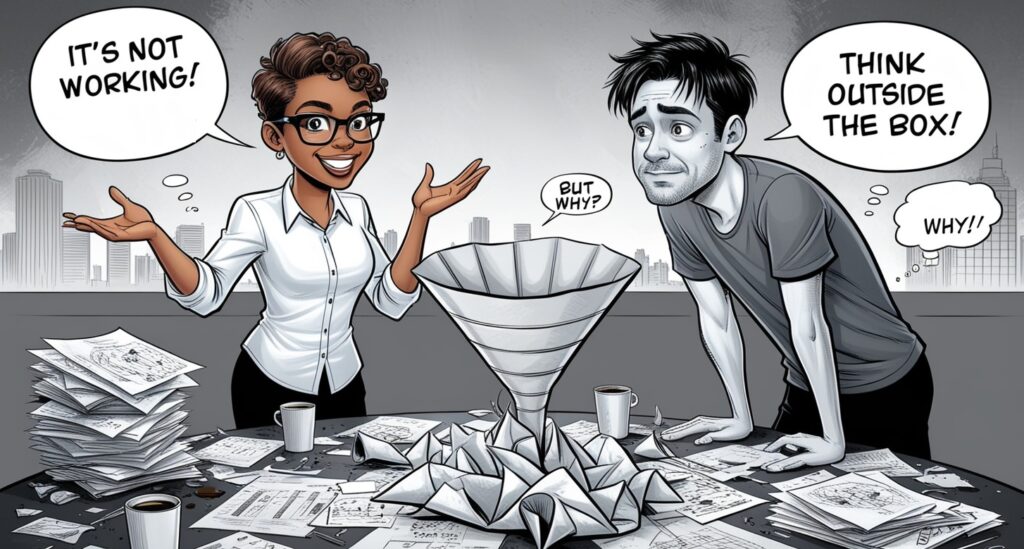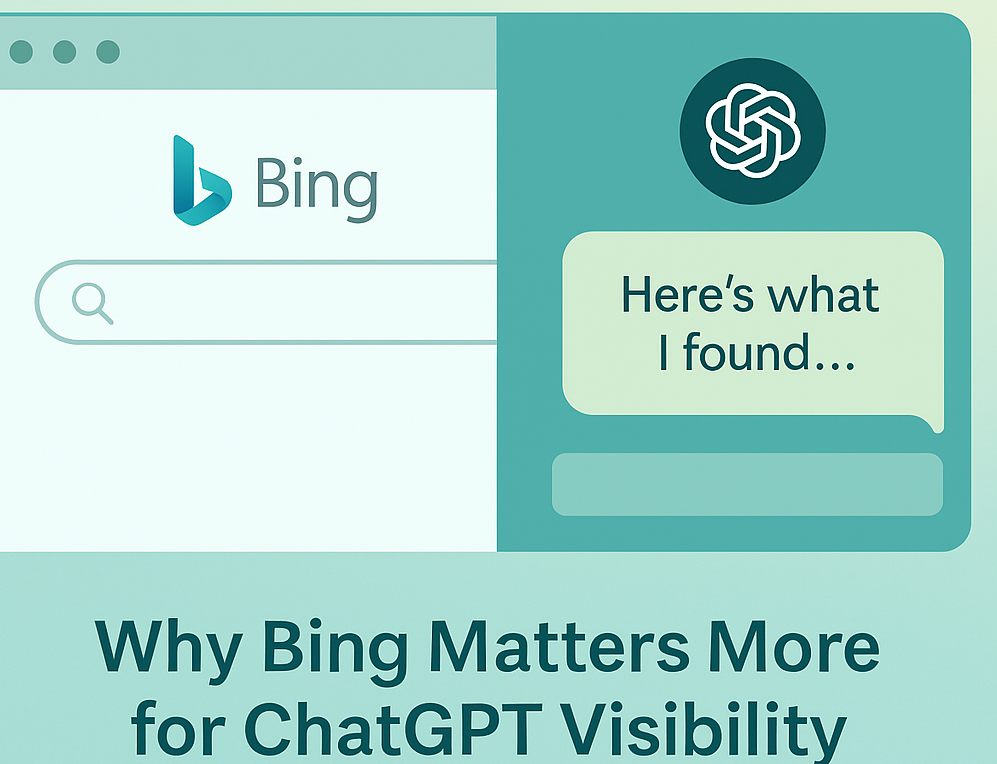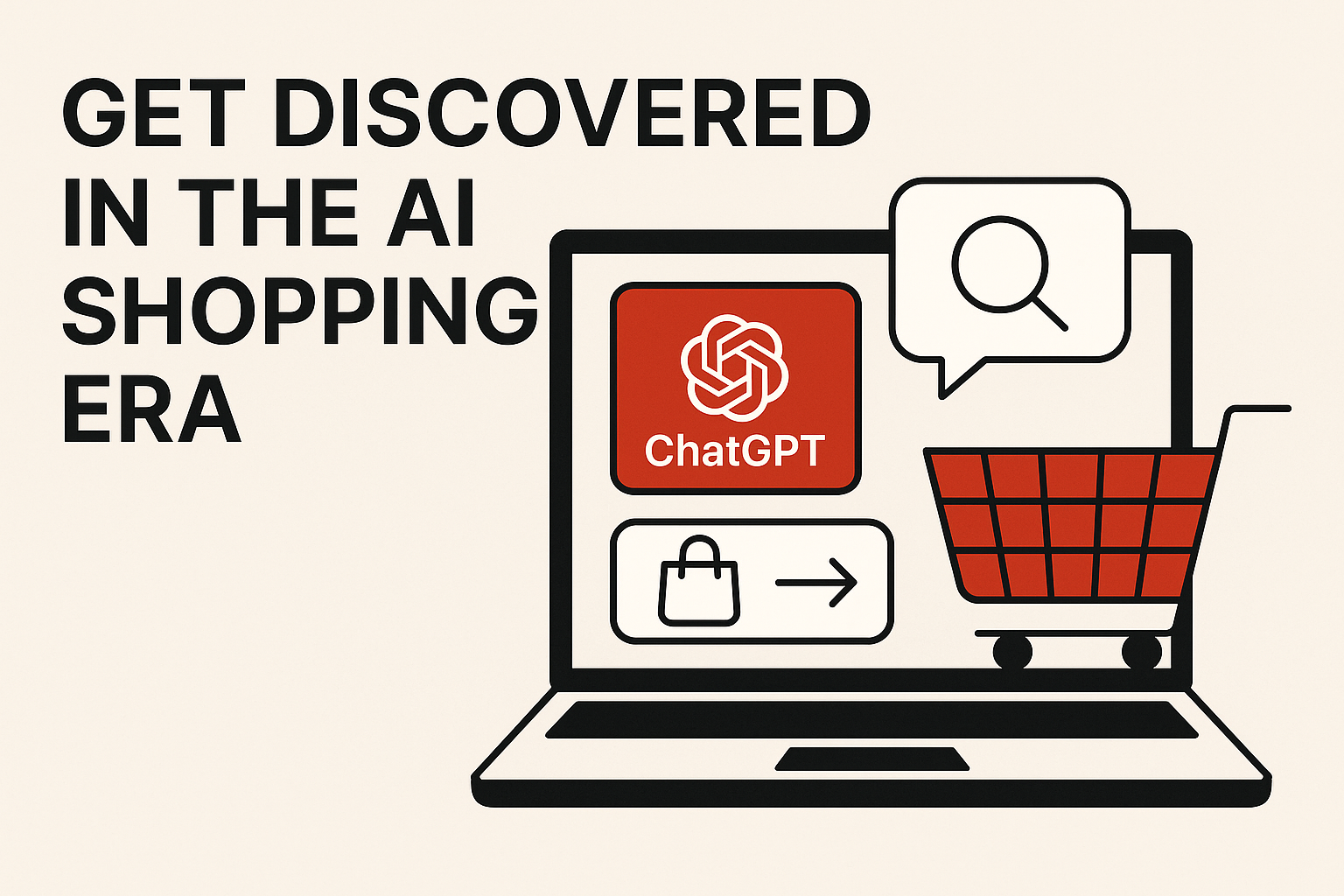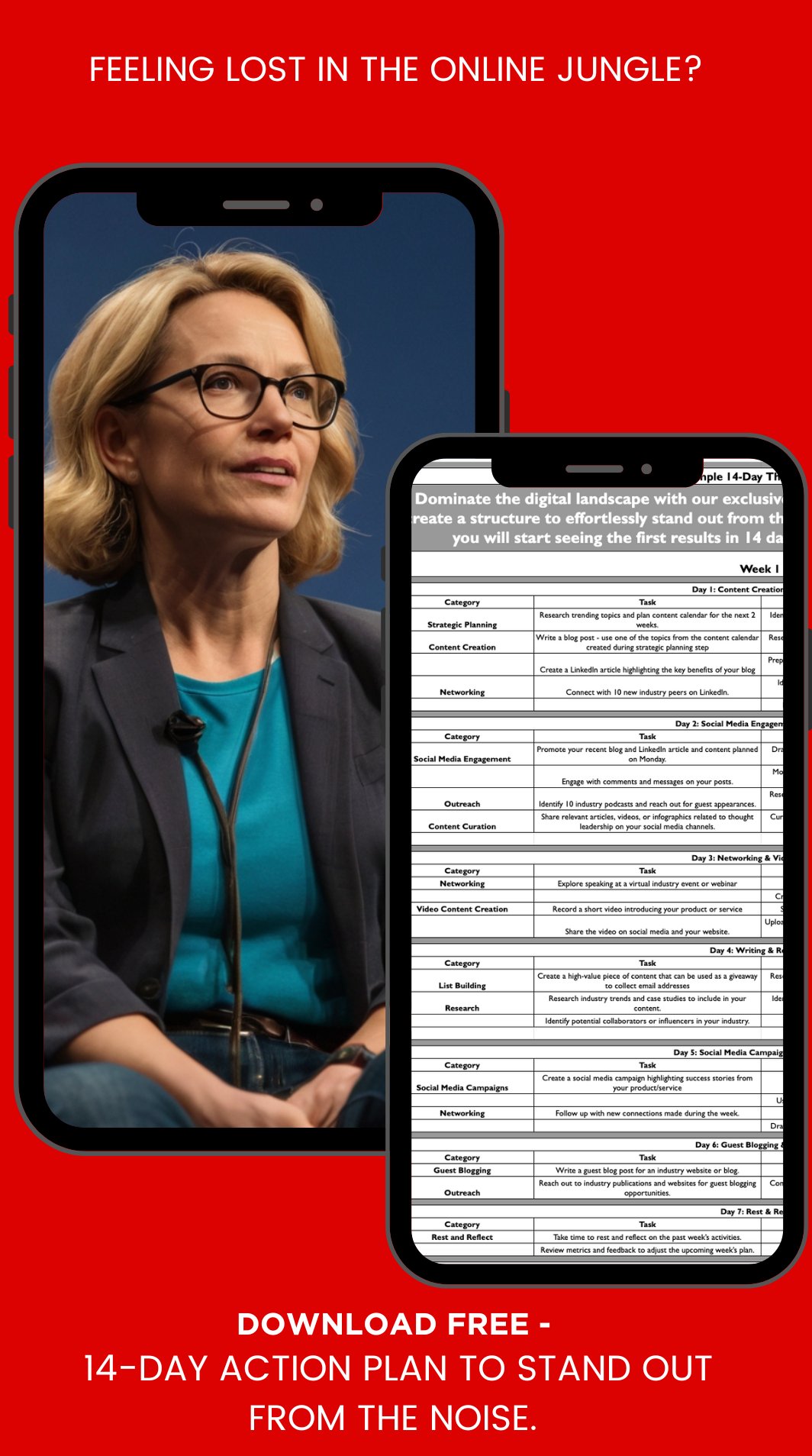“I’d rather debug a thousand lines of legacy code than spend another hour trying to understand marketing funnels.”
This came from a technical founder during our monthly CEO roundtable, and the spontaneous chorus of nervous laughter told me he’d struck a nerve.
See, there’s this unspoken tension in the tech world: brilliant engineers who can architect complex systems in their sleep, suddenly finding themselves staring at marketing flowcharts like they’re trying to decipher ancient hieroglyphics.
We recently surveyed 50 engineer-turned-CEOs about their biggest growth challenges.
The results?
While 92% could explain their product’s technical architecture in minute detail, 78% admitted they were “guessing” at their marketing strategy.
One founder told me how he’d spent three months optimizing his product’s performance by 0.3 seconds – a genuine achievement – but couldn’t tell me if his company’s LinkedIn posts were reaching the right people.
Here’s what nobody tells you: the traditional marketing funnel was designed by marketers, for marketers. It’s like trying to force-fit a waterfall methodology into a world that runs on agile.
But what if we could approach marketing the way we approach engineering problems?
Not with fluffy buzzwords and complex funnels, but with clear inputs, measurable outputs, and iterative improvements?
I call it the ‘Anti-Funnel’ approach.
It’s how one of our clients – a developer tools startup – grew their user base from 500 to 20,000 in six months without ever using the words “brand awareness” or “customer journey.”
The secret isn’t in mastering traditional marketing principles. It’s in leveraging the same analytical thinking that makes you a great engineer to build a growth system that actually makes sense.
Let me show you seven practical ways to grow your business that won’t make your engineering brain hurt…
Table of Contents
ToggleWhy Traditional Marketing Funnels Fall Short

Before we dive into solutions, let’s quickly address why the old-school marketing funnel isn’t cutting it anymore:
It often ignores the power of community and peer influence
It’s too rigid for today’s dynamic customer journeys
It focuses on short-term conversions over long-term relationships
Now, let’s get practical.
7 Anti-Funnel Ideas: A Step-by-Step Guide
Step 1: Audit Your Current Approach (Time: 2-3 hours)
You can’t improve what you don’t measure.
Here’s a quick audit you can do:
- List all your current marketing activities (e.g., website, email, social media)
- For each activity, note:
- Time spent per week
- Cost per month
- Key metrics (e.g., website visits, email opens, social media engagement)
- Identify your top 3 sources of new customers

Action Item: Create a simple spreadsheet with this information. This will be your baseline and the areas of focus.
Step 2: Redefine Your Metrics (Time: 1 hour)
Instead of obsessing over vanity metrics, focus on what really matters:
Customer Lifetime Value (CLV): How much a customer spends over their entire relationship with you
Net Promoter Score (NPS): How likely customers are to recommend you
Time to Value: How quickly customers see results from your product

Action Item: Set up a simple dashboard (Google Data Studio is free and easy to use) to track these metrics monthly.
Step 3: Create a Value-First Content Hub (Time: Ongoing, 2-3 hours per week)
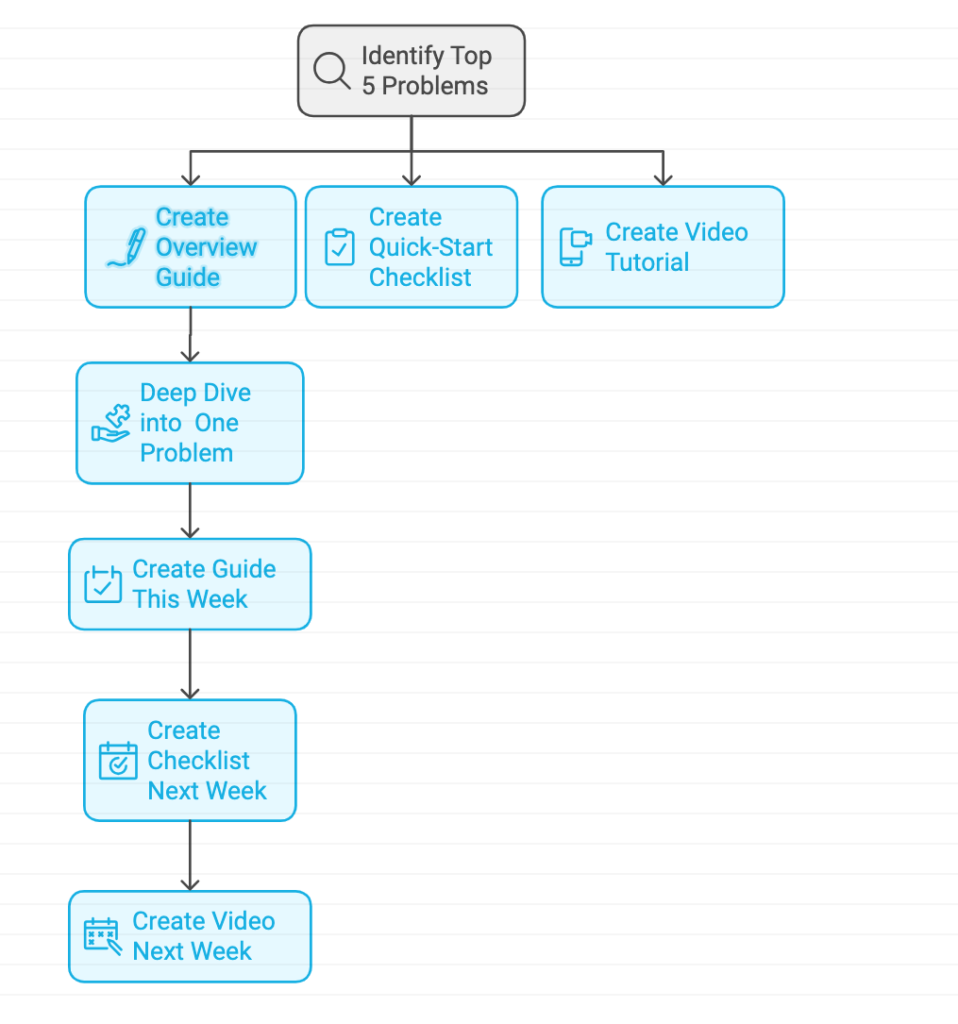
Instead of a traditional blog, create a resource center that directly addresses your customers’ pain points:
- Identify the top 5 problems your product solves
- For each problem, create:
- A detailed guide (1500-2000 words)
- A quick-start checklist
- A video tutorial (5-10 minutes)
Action Item: Start with one problem. Create the guide this week, the checklist next week, and the video the week after.
Step 4: Implement Simple Personalization (Time: 3-4 hours setup, then automated)
You don’t need fancy AI to start personalizing.
Here’s a simple approach:
- In your sign-up form, ask users to select their primary goal (e.g., “increase productivity,” “reduce costs”)
- Set up an email automation tool (e.g., Mailchimp, ConvertKit) to tag users based on their selection
- Create a simple email sequence for each goal, focusing on how your product helps achieve it

Action Item: Set up the tagging system and create one email sequence this week.
Step 5: Build a Community (Time: 2-3 hours setup, 1 hour per day management)
Communities are powerful for retention and organic growth. Here’s how to start:
Invite your most engaged customers to join
Choose a platform (e.g., Slack, Discord, Notion or a simple forum on your website)
Create 3-5 channels based on common use cases or topics
Seed each channel with a question or discussion prompt

Action Item: Set up the community platform and invite your first 10 members this week.
Step 6: Implement a “Quick Wins” Onboarding (Time: 4-5 hours setup, then automated)
Help new users see value fast:
- Identify the simplest, most impactful action a new user can take with your product
- Create a short video (2-3 minutes) showing how to do it
- Set up an automated email to send this video to new sign-ups after 1 hour
Action Item: Create the video and set up the automation this week.
Step 7: Set Up a Simple Referral System (Time: 2-3 hours)
Word-of-mouth is powerful. Encourage it with a basic referral system:
- Decide on a simple reward (e.g., one month free, extra features)
- Create a unique referral link for each customer
- Add the referral link to your product interface and post-purchase emails
Action Item: Implement the referral system using a tool like ReferralCandy or a simple custom solution.

Putting It All Together: A Week-by-Week Plan
Here’s how to implement these steps over the next month:
Week 1:
- Monday: Complete Step 1 (Audit)
- Tuesday-Wednesday: Do Step 2 (Metrics) and start Step 3 (Content Hub – write the guide)
- Thursday-Friday: Begin Step 4 (Personalization setup)
Week 2:
- Monday-Tuesday: Finish Step 4 and create first email sequence
- Wednesday: Do Step 5 (Set up community)
- Thursday-Friday: Start Step 6 (Create onboarding video)
Week 3:
- Monday: Finish Step 6 and set up automation
- Tuesday-Wednesday: Do Step 7 (Referral system)
- Thursday-Friday: Create checklist for Content Hub (Step 3 continued)
Week 4:
- Monday-Tuesday: Create video for Content Hub (Step 3 completed)
- Wednesday-Friday: Review all systems, make adjustments, and plan next actions
Measuring Success
After implementing these steps, keep an eye on:
- Engagement rates (Are people using your content hub and community?)
- Time to first value (Are new users getting value faster?)
- Referral rates (Are customers spreading the word?)
- Customer Lifetime Value (Are customers sticking around longer?)
Remember, the goal of the Anti-Funnel approach is to create an ecosystem where customers can engage on their terms, find value quickly, and become advocates for your product.
Case Study: EngiTech’s Anti-Funnel Success
EngiTech, a small team of engineers who created a code review tool, implemented this Anti-Funnel approach. The results after 3 months:
- 30% increase in user activation rate
- 25% reduction in customer support tickets
- 40% increase in referral sign-ups
- 2x increase in daily active users in their community
They achieved this by focusing on creating valuable content around common code review problems, implementing a quick-win onboarding process, and fostering a supportive community of developers.
Conclusion: Start Small, Think Big
You don’t need a marketing degree to grow your tech business.
By focusing on providing value, building relationships, and empowering your customers, you can create a sustainable growth engine that doesn’t rely on pushy sales tactics or complex funnels.
Remember, the best marketing doesn’t feel like marketing at all. It feels like help. So start helping, start measuring, and watch your business grow.
Ready to ditch the funnel and embrace the Anti-Funnel?
Your future customers (and your engineering brain) will thank you.
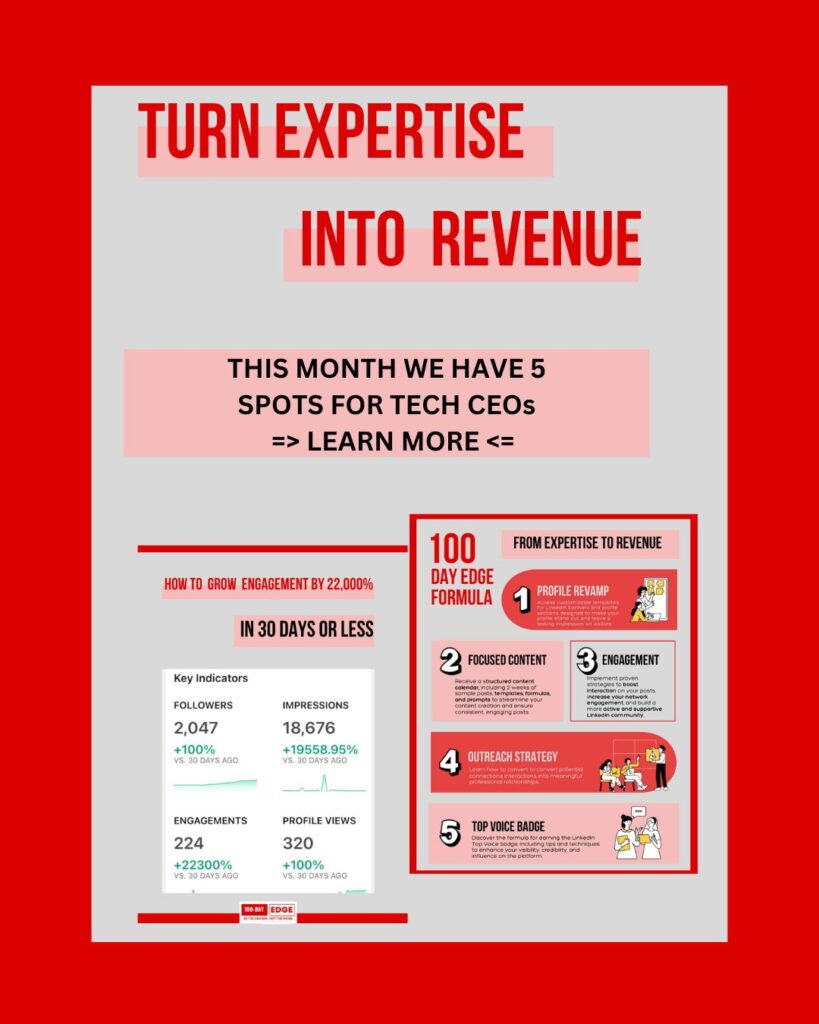
This month, my team is helping 5 technology leaders transform their expertise into tangible business results.
In 100 days, you’ll:
- Stage 1: Define your EDGE and optimize your online presence.
- Stage 2: Engage your tribe and land your first high-value client.
- Stage 3: Set your EDGE on fire with strategic content and recurring revenue.

